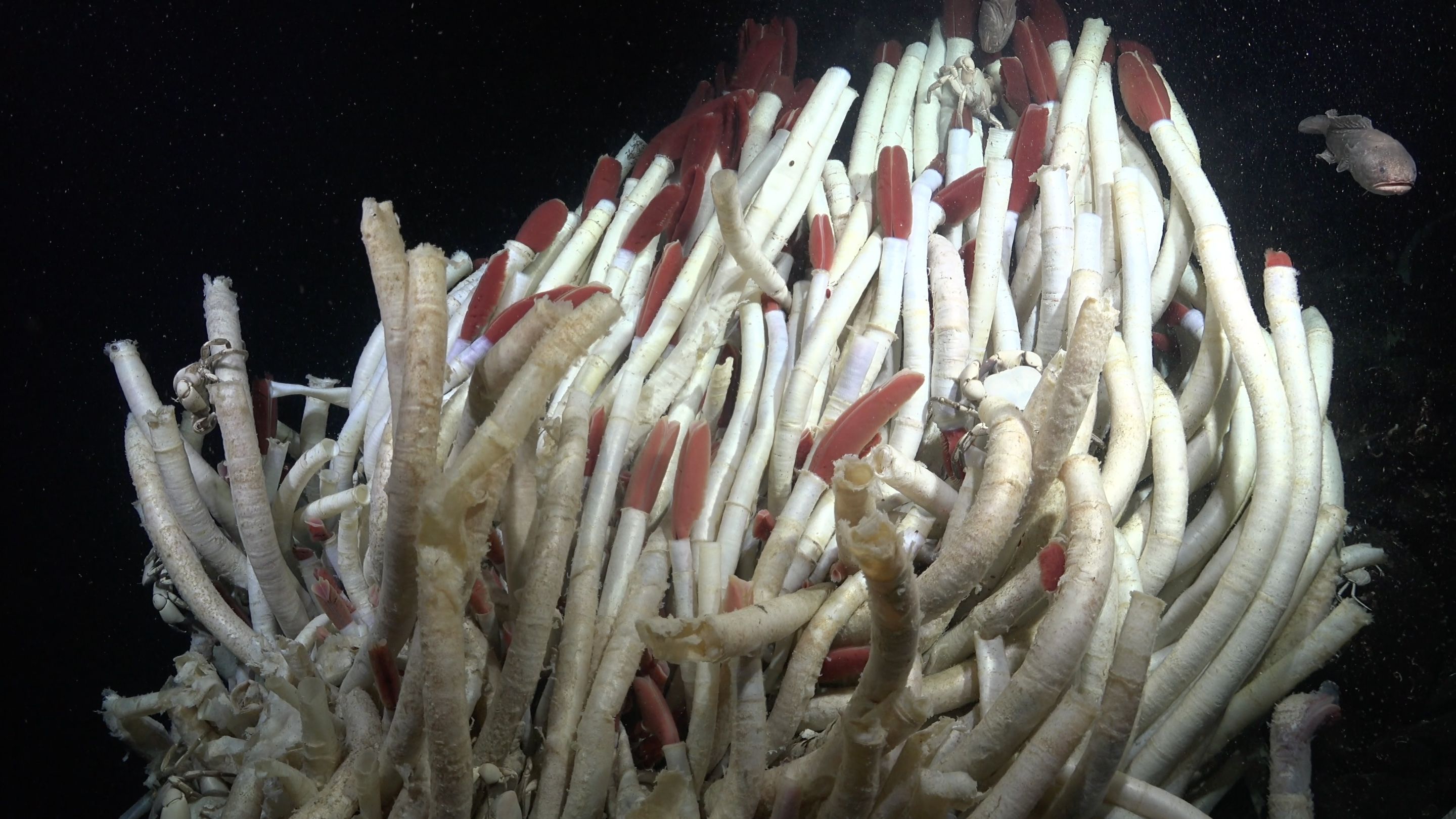Scientists at the Schmidt Ocean Institute have discovered a new hydrothermal vent field off the Western Galápagos Islands – one that has been speculated about for around 20 years, but never actually located until now. To finally pin the evasive vents down, the team had some help from a group of obliging squat lobsters, whose trail led them exactly where they needed to be.
Setting out to characterize hydrothermal vents west of the Galápagos in the Pacific Ocean, the researchers stumbled upon the new field, which is larger than a soccer pitch and made up of five geyser-like chimneys and three hot springs. Hydrothermal vents are fissures on the seabed from which geothermally heated water can escape. As such, things get pretty toasty around them – the highest temperature recorded at the freshly discovered field was 288°C (550°F).
But it was only after spotting a Galatheid crab, also known as a squat lobster, that these observations became possible. As the team followed the crustaceans like breadcrumbs, their number grew, until finally they arrived at the long-awaited vent field.
“Scientists have known since the early 2000s that this vent field was likely there. But it was particularly hard to locate because the fluids are clear and do not emit large clouds into the water like black smokers do,” Dr Roxanne Beinart, one of the lead researchers, said in a statement. “It took our team of chemists, geologists, biologists, and a few crabs to find it.”
Alongside the geysers and hot springs, the team found giant tube worms thriving in the balmy waters of the field, which has been named “Sendero del Cangrejo” or “Trail of the Crabs” in homage to its crustacean colonizers.
The discovery of the 9,178 square meter (98,791 square foot) field was the result of a 30-day expedition, beginning on August 13, which involved Schmidt Ocean Institute’s research vessel Falkor (too) in collaboration with the Galápagos National Park Directorate, Charles Darwin Foundation, and the Ecuadorian Navy’s Oceanographic and Antarctic Institute.
Falkor (too) has had quite a year, being involved in numerous discoveries that have helped further our understanding of hydrothermal vents and their effects on the entire planet.
“This is the fourth hydrothermal vent field discovery made by scientists on our new research vessel Falkor (too) since March, in addition to the discovery in August of a new animal ecosystem living under hydrothermal vents,” said Schmidt Ocean Institute Executive Director Dr Jyotika Virmani.
“With 75 percent of the seafloor still to map, finding this new vent field shows how much we still have to learn about our planet and those who live on it. I am continually amazed by the otherworldly beauty of our seafloor and look forward to uncovering more.”

A large cluster of giant tube worms proved the researchers were in a new hydrothermal vent field.
This expedition, and others like it, help create a more complete picture of the deep sea as a whole, as well as of the area west of the Galápagos more specifically. They also shed some light on hydrothermal vent systems and how they are interconnected.
“Understanding and adding a better description of the distribution and unique nature of such deep-water hydrothermal communities is hugely important for the integral management of our oceans,” said Stuart Banks, Senior Marine Scientist at the Charles Darwin Foundation.
“Such a discovery for the Galapagos and Eastern Tropical Pacific takes us important steps closer to ensuring hidden deep-water biodiversity is recognized, appreciated, and built into ongoing conservation efforts.”
Source Link: Trail Of Crabs Lures Scientists To Incredible Deep-Sea Discovery Off The Galápagos Islands